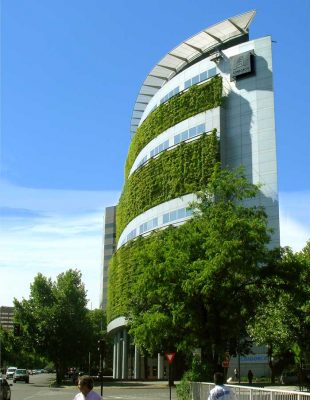How thermoplastic polymers are shaping the future guide, EPS sustainable architecture trends
How Thermoplastic Polymers Shape The Future
17 May 2023
Sustainable Architecture: How Thermoplastic Polymers Are Shaping The Future
As we navigate through the 21st century, sustainability has become a critical focal point in various sectors, particularly architecture. The architectural landscape is rapidly evolving, with innovative materials and technologies that prioritize environmental consciousness and energy efficiency. One such innovation reshaping the industry is the use of thermoplastic polymers.
This article aims to explore how thermoplastic polymers, with their unique properties and applications, are transforming the future of sustainable architecture.
Understanding Thermoplastic Polymers
Thermoplastic polymers are a class of synthetic materials characterized by their ability to soften when heated and harden when cooled. This process is reversible, making them uniquely recyclable.
Unlike traditional building materials, thermoplastic polymers offer architects a greater degree of flexibility and creativity. They are lightweight, durable, and resistant to moisture, chemicals, and UV radiation, making them ideal for a variety of applications in sustainable architecture.
Energy-Efficient Insulation
Thermoplastic polymers, such as expanded polystyrene (EPS) and polyurethane foams, have proven to be excellent insulators. They help keep buildings warm during winter and cool in the summer, substantially reducing energy consumption.
Moreover, their excellent thermal performance and low thermal conductivity make them ideal for green building designs.
Versatility In Design
The malleability of thermoplastic polymers allows architects to design complex, intricate structures that would be challenging, if not impossible, with traditional materials. From translucent panels for natural lighting to 3D-printed components for bespoke design elements, the aesthetic and functional possibilities are virtually endless.
The versatility of these materials encourages innovative architectural designs that are not just sustainable but visually appealing too.
Weather And Impact Resistance
Thermoplastic roofing, made from materials like PVC and TPO, is known for its durability and resistance to weather elements. It can withstand extreme temperatures, heavy rain, snow, and even hail, reducing the need for frequent repairs or replacements.
Additionally, these materials are highly resistant to impact and punctures, making them a safe and long-lasting choice for sustainable construction.
Recyclability And Waste Reduction
Perhaps the most significant advantage of thermoplastic polymers is their recyclability. Since they can be heated and reshaped multiple times without losing their properties, they significantly reduce construction waste. Old or excess materials can be recycled into new products, promoting a closed-loop system in the architectural industry.
Furthermore, thermoplastic polymers are often made from post-consumer waste, driving the move towards a circular economy.
Cost-Effectiveness
Thermoplastic polymers are not just about sustainability and design flexibility; they also present a cost-effective solution for construction. These materials are generally less expensive than traditional building materials like wood, stone, or metal.
Additionally, their lightweight nature reduces transportation costs, and their ease of installation saves on labor costs. Furthermore, the durability and low-maintenance requirements of thermoplastic polymers lead to significant savings over the building’s lifespan.
Acoustic Insulation
In addition to thermal insulation, certain thermoplastic polymers provide excellent acoustic insulation. Polyvinyl chloride (PVC), for instance, is often used in windows and doors due to its sound-dampening properties.
This makes it an ideal material for buildings in busy urban areas or structures that require soundproofing, such as music studios or libraries, adding another dimension to the versatility of thermoplastic polymers in sustainable architecture.
Fire Resistance
While not all thermoplastic polymers are inherently fire-resistant, many can be treated or combined with fire-retardant additives to enhance their fire resistance.
For instance, thermoplastic composites with fire-retardant treatments are gaining popularity in the construction industry. This property is crucial for ensuring the safety of buildings and their occupants, contributing to the overall sustainability of the structure.
Adaptability To Future Technologies
The rise of technologies like 3D printing in construction presents new opportunities for the use of thermoplastic polymers.
Given their malleability and recyclability, these materials are ideal for 3D printing processes. This adaptability suggests that as technology continues to evolve and influence architecture, thermoplastic polymers are well-positioned to accommodate these future innovations, further cementing their role in sustainable architecture.
Contribution To Indoor Air Quality
Some thermoplastic polymers, like polyethylene (PE), have been observed to contribute positively to indoor air quality. They do not off-gas volatile organic compounds (VOCs) like some traditional building materials can, leading to healthier indoor environments.
This is especially crucial in today’s architectural landscape, where there’s an increasing focus on not just the environmental sustainability of buildings, but also the health and well-being of their occupants.
Light-Transmitting Properties
Certain thermoplastic polymers, such as polycarbonate, possess light-transmitting properties, making them an excellent material for creating naturally lit spaces. Natural light in buildings not only reduces electricity consumption by decreasing the need for artificial lighting but also contributes to occupants’ well-being.
The strategic use of these materials can help architects design spaces that are energy-efficient, sustainable, and occupant-friendly.
How Thermoplastic Polymers Are Shaping The Future Conclusion
The incorporation of thermoplastic polymers into architecture heralds a new era of sustainable construction. These materials, with their unique properties and potential applications, are proving to be a game-changer in the industry. From energy-efficient insulation to design versatility, weather resistance, and recyclability, thermoplastic polymers are undoubtedly shaping the future of sustainable architecture.
Comments on this guide to How thermoplastic polymers are shaping the future article are welcome.
Sustainable Architecture
Sustainable Architecture
Sustainable architecture

photograph : Enrique Browne
Sustainable Design : article by Trevor Tucker. 15 Sep 2009
Sustainable Architecture News Scotland : News
Property
Architecture
Comments / photos for the How thermoplastic polymers are shaping the future page welcome






